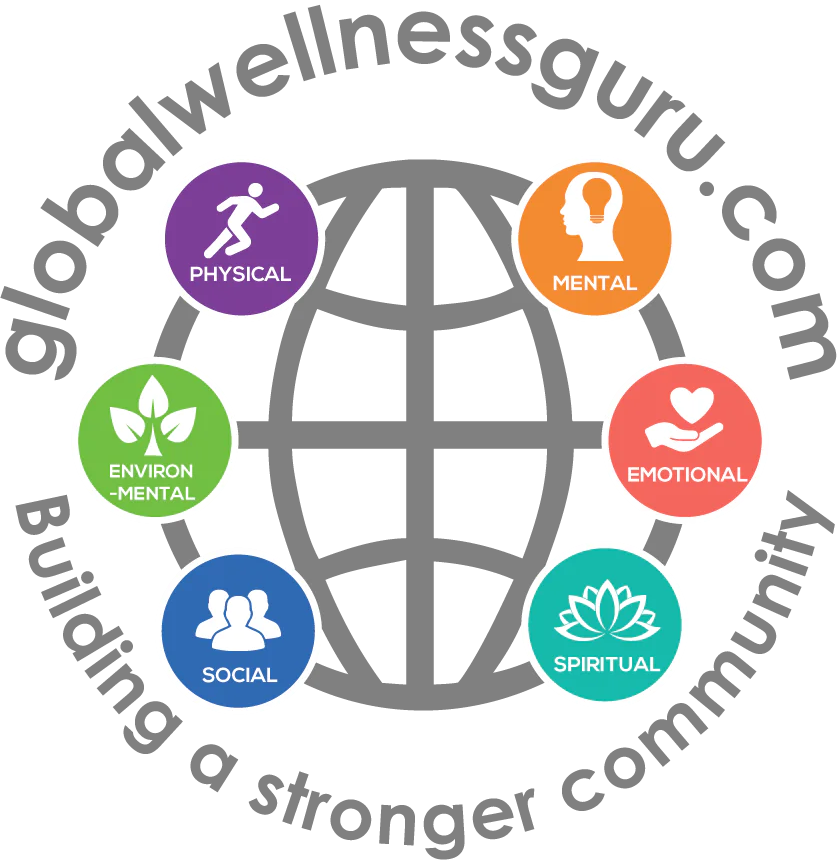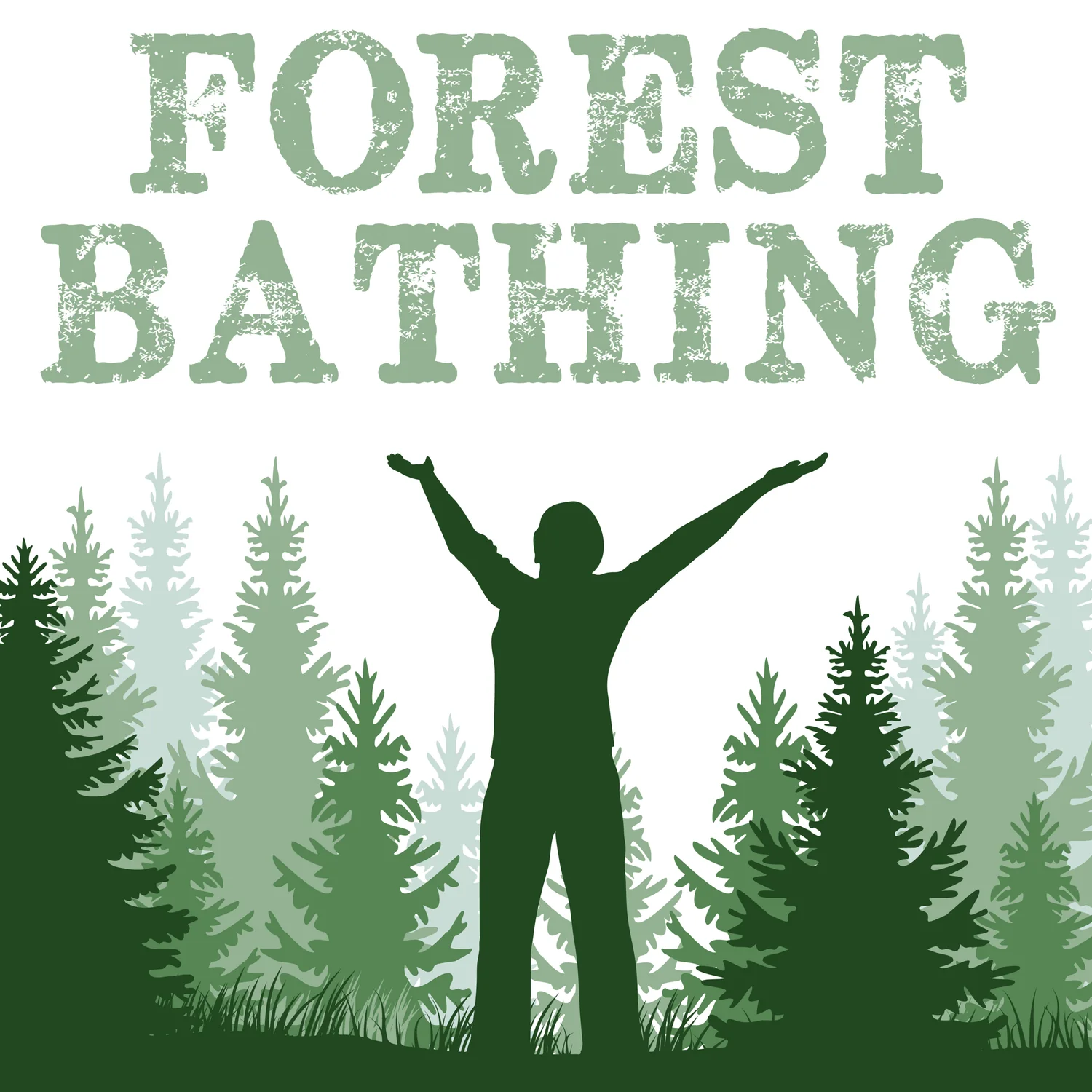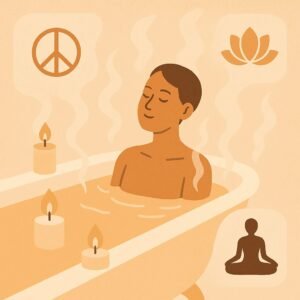Forest Bathing: Healing the Spirit through Nature Immersion Nutrition Advice
Humans have an innate connection to nature. For most of our existence, we have lived intertwined with the natural world around us. However, in recent history, we have become increasingly disconnected. Urbanization and technology have shifted much of society indoors, to the detriment of our health and wellbeing.
Research shows that spending time immersed in nature provides a multitude of benefits, from reducing stress and improving mood to boosting immunity and cognition[1]. One way of tapping into these restorative powers is through the practice of forest bathing.
What is Forest Bathing?
Forest bathing, also known as shinrin-yoku, is a form of nature therapy that originated in Japan in the 1980s. It involves mindfully immersing your senses in the sights, sounds, smells, and feels of the forest environment, without any distractions or goals[2]. The aim is to slowly wander through natural settings while engaging your senses to soak up the forest atmosphere.
Unlike hiking or other outdoor activities, forest bathing is not focused on covering long distances, getting exercise, or reaching destinations. The only objective is to connect deeply with nature[2].
You leave behind technology and let your mind wander as you tune into the sensory nuances of the trees around you – the dappled sunlight filtering through the canopy, the scent of damp soil and foliage, the sound of a babbling brook or birdsong, the textures of bark and leaves beneath your fingers.
Some structured forest bathing programs take place over multiple hours or days and are led by trained guides. However, you can practice informal forest bathing on your own whenever you have the chance to spend intentional time immersed in nature.

Research suggests that forest bathing can have significant and lasting positive effects on both physical and mental health.
The Science Behind the Benefits
Forest bathing is grounded in scientifically demonstrated benefits of spending time around trees and in natural spaces. Here’s an overview of some of the key research findings[3]:
Reduced Stress and Restored Wellbeing
Multiple studies have shown that walking in nature lowers levels of the stress hormone cortisol as well as heart rate and blood pressure indicators. One study found that people who went on a 90-minute walk in nature showed decreased activity in the prefrontal cortex – the area of the
brain associated with mental rumination. They reported feeling more energized and able to reflect on life with clarity[4][5].
Enhanced Immune Function
Spending time around trees, particularly evergreen trees, is linked with increased antiviral and anti-cancer activity. Phytoncides – antimicrobial organic compounds – are given off by trees and plants and can boost immune defense when we breathe air filled with these compounds in natural environments.
Studies show that forest bathing trips increase the count of natural killer cells – key players in the immune system’s defense against infections and illness – for up to 30 days for those with already compromised immune function[6]. For healthy individuals, a daylong forest bathing trip led to a significant increase in natural killer cell activity that lasted for at least 7 days[6].
Improved Mood and Cognitive Performance
Research demonstrates that spending time in nature effectively elevates mood, evokes positive emotions like awe and joy, and reduces negative emotions like anger and sadness. These mental perks have been shown across diverse groups of people and seem to occur rather rapidly during the first few hours of immersion[7].
Beyond mood, nature also appears to bolster attention, memory, creative problem-solving, and the ability to reflect on life’s purpose – what scientists call “cognitive soft fascination.” The patterns, smells, textures, sounds, and ever-changing quality of nature require just enough attention to let our minds relax, wander, and restore.
One study found that walk in nature showed improvements in memory span and performance on verbal reasoning tests compared to those who walked downtown. Being disconnected from technology and letting our brains enjoy the gentle demands of nature allows what’s known as involuntary attention to take over, giving our directed attention mechanisms a much-needed rest[8].

Getting the Most Out of Forest Bathing
If you’re new to forest bathing, keep these tips in mind to fully reap the healing benefits[9][10]:
Go Slow
The spirit of forest bathing is one of slowness – meandering mindfully rather than rushing to see as much as possible. Go at nature’s pace. Stop frequently to take in sensory details. Sit for stretches beside babbling creeks. Pause to touch the moss-covered trunk of a towering tree. The therapeutic gifts of the forest will be missed if you hurry along the trail.
Engage All Your Senses
Make a point to sniff the fresh pine scent as you pass through a stand of evergreens. Close your eyes and turn your ear to pick up the sounds of birds chirping and squirrels skittering. Reach out to feel the sun-warmed rocks along the path. Slow down and let your senses soak up the atmosphere.
Leave Technology Behind
Smartphones and other devices detract from the restorative benefits. The ping of notifications pulls your attention away from nature. Make it a practice to step away and unplug. Being present is the priority. Let stress dissolve as you wander off the grid.
Visit Often
The more exposure you get to natural spaces, the greater and more lasting the effects. Make weekly forest therapy a health-promoting habit, even if you just have time for a short session. This consistency lets the positive impacts compound.
Consider a Guide
Especially when first starting out, having an experienced forest therapy guide can do much to enrich the experience. They know the most scenic trails and best spots to pause and reflect. Guides also provide safety while allowing you to fully relax into the sensory awakening.
Top Forest Bathing Destinations
While almost any natural setting offers opportunities for forest bathing, some forests have gained fame for their healing atmosphere. Top destinations include[11][12]:
- Great Smoky Mountains National Park
The verdant slopes of this UNESCO World Heritage site along the Tennessee-North Carolina border invite quiet contemplation. Take in the fresh smells of pine and rhododendrons while listening to rushing streams tumble over rocky cascades.
- Redwood National and State Parks
Walk among towering ancient redwoods, some over 2,000 years old. Breathe deeply of the scent these giants put off to prevent rot. Marvel at the hushed majesty all around you.
- Black Forest, Germany
Legend has it that the Black Forest got its name because the canopy of evergreens is so thick it blocks out the sun. Breathing in phytoncides while wandering quiet trails is said to boost immunity.
- Forest of Dean, England
Oaks and chestnuts mingle with ferns and wild daffodils in this ancient woodland. Local guides lead meditative sessions attuned to seasonal sights and sounds.
- Taiyang Mountains, Taiwan
Taiwan offers more than 260 forest therapy trails specially designed to take in the best sights, smells, and sounds for optimal well-being boosts. Guides assist you in tuning into your sensory experiences.
- Tahquamenon Falls State Park, Michigan
Some of the largest eastern white pine and hemlock forests left in the U.S. set the scene. Take a relaxing refuge in the solitude surrounding the stunning waterfalls.
Additional Tips for Making the Most of Forest Bathing
Here are some additional tips to make the most of your forest bathing experience[13][14]:
Pay Attention to Your Breath
In the midst of nature, the rhythmic symphony of leaves, rustling branches, and birdsong can serve as a backdrop to your conscious breathing. As you inhale and exhale, let the serene environment guide you into a state of deep calm. Allow your thoughts to mimic the gentle drift of clouds overhead, fostering a meditative experience that harmonizes with the natural world around you.
Bring a Field Guide
Take your forest bathing experience to the next level by bringing along a field guide. Whether in the form of books or handy phone apps, these guides help you identify and appreciate the diverse flora and fauna surrounding you. Learn about the trees, plants, birds, and tracks you encounter, enriching your sensory immersion and deepening your connection with the environment.
Visit All Seasons
Embark on a journey through the changing tapestry of the forest by experiencing it in all seasons. Witness the vibrant hues of spring, the lush greens of summer, the fiery palette of autumn, and the serene stillness of winter. Each season brings a unique charm and offers
distinct sensory impressions, making it a rewarding goal to explore your favorite trail throughout the year.
Invite Friends
While solo forest bathing provides a space for personal contemplation, consider inviting friends or family to join you on your nature sojourn. Shared experiences in the forest can foster meaningful connections, inspire shared insights, and create a sense of camaraderie. The collective appreciation of the natural world amplifies the joy and depth of your forest bathing adventures.
Keep a Nature Journal
Enhance your reflective experience by keeping a nature journal. Record the sensations, fleeting thoughts, emotions, and poetry that arise during your forest bathing sessions. Sketches of the landscape or details of the flora and fauna encountered can add another layer to your connection with nature. A nature journal becomes a personal chronicle of your journey, capturing the essence of each experience.
Do Yoga or Meditate
Immerse yourself in the living energy of the forest through mindful movement or meditation. Whether you flow through yoga poses amidst the trees or find a quiet spot to sit and meditate, let the tranquility of the natural surroundings seep into your awareness. Clear your mind, breathe deeply, and allow the forest to become a source of inspiration and rejuvenation for your body and soul.

Forest bathing, especially meditation offers several advantages like Stress Reduction, Mental Well-being, Mindfulness, and Relaxation.
Conclusion
Humans suffer when disconnected from nature. We are biologically hardwired to crave interaction with the natural world – what biologist E.O. Wilson termed “biophilia[15].” Forest bathing fulfills this innate longing. Through mindful sensory immersion, we drink in nature’s restorative elixir.
Beyond the scientific evidence, truth is found in the profound sense of well-being that comes from wandering slowly through the forest, enfolded by trees, bathed by birdsong and dappled sunlight.
Strength is drawn from rocks warmed by the sun. Peace flows on the scent of pine needles underfoot. Wisdom sits in stillness beneath the silent giants. Forest bathing blesses body, mind, and spirit through nature’s grace.
References:
[1] Wen, Ye et al. “Medical empirical research on forest bathing (Shinrin-yoku): a systematic review.” Environmental health and preventive medicine vol. 24,1 70. 1 Dec. 2019, doi:10.1186/s12199-019-0822-8
[2] Farkic, Jelena, Gorana Isailovic, and Steve Taylor. “Forest bathing as a mindful tourism practice.” Annals of Tourism Research Empirical Insights 2.2 (2021): 100028.
[3] Payne, Mark, and Elias Delphinus. “A review of the current evidence for the health benefits derived from forest bathing.” The International Journal of Health, Wellness and Society 9.1 (2018): 19.
[4] Park, Bum Jin et al. “The physiological effects of Shinrin-yoku (taking in the forest atmosphere or forest bathing): evidence from field experiments in 24 forests across Japan.” Environmental health and preventive medicine vol. 15,1 (2010): 18-26.
doi:10.1007/s12199-009-0086-9
[5] News-Medical. “How Does a Walk in Nature Impact the Brain?” News-Medical.net, 8 Sept. 2022,
www.news-medical.net/news/20220908/How-does-a-walk-in-nature-impact-the-brain.aspx.
[6] Li, Qing. “Effect of forest bathing trips on human immune function.” Environmental health and preventive medicine vol. 15,1 (2010): 9-17. doi:10.1007/s12199-008-0068-3
[7] “Taking Charge of Your Health & Wellbeing.” Taking Charge of Your Health & Wellbeing, 2013, www.takingcharge.csh.umn.edu/how-does-nature-impact-our-wellbeing.
[8] Berman, Marc G., et al. “Interacting with Nature Improves Cognition and Affect for Individuals with Depression.” ResearchGate, Elsevier BV, 30 Mar. 2012,
[9] Li, Qing. “Effect of forest bathing trips on human immune function.” Environmental health and preventive medicine vol. 15,1 (2010): 9-17. doi:10.1007/s12199-008-0068-3
[10] Furuyashiki, Akemi et al. “A comparative study of the physiological and psychological effects of forest bathing (Shinrin-yoku) on working age people with and without depressive tendencies.” Environmental health and preventive medicine vol. 24,1 46. 22 Jun. 2019, doi:10.1186/s12199-019-0800-1
[11] Hansen, Margaret M et al. “Shinrin-Yoku (Forest Bathing) and Nature Therapy: A State-of-the-Art Review.” International journal of environmental research and public health vol. 14,8 851. 28 Jul. 2017, doi:10.3390/ijerph14080851
[12] Tsao, Tsung-Ming et al. “Forest Bathing Is Better than Walking in Urban Park: Comparison of Cardiac and Vascular Function between Urban and Forest Parks.” International journal of environmental research and public health vol. 19,6 3451. 15 Mar. 2022,
doi:10.3390/ijerph19063451
[13] “Guest Post: Forest Bathing – 8 Tips for Maxing Relaxing in Nature with PTSD – Page 7 – PTSD UK.” Ptsduk.org, 2022,
www.ptsduk.org/guest-post-forest-bathing-8-tips-for-maxing-relaxing-in-nature-with-ptsd/7/
[14 ]Getaway. “Tips to Help You Try Forest Bathing – Getaway Journal.” Getaway Journal, 10 Jan. 2023, journal.getaway.house/tips-to-help-you-try-forest-bathing/.
[15] Barbiero, Giuseppe, and Rita Berto. “Biophilia as Evolutionary Adaptation: An Onto- and Phylogenetic Framework for Biophilic Design.” Frontiers in Psychology, vol. 12, Frontiers Media, July 2021, https://doi.org/10.3389/fpsyg.2021.700709.







